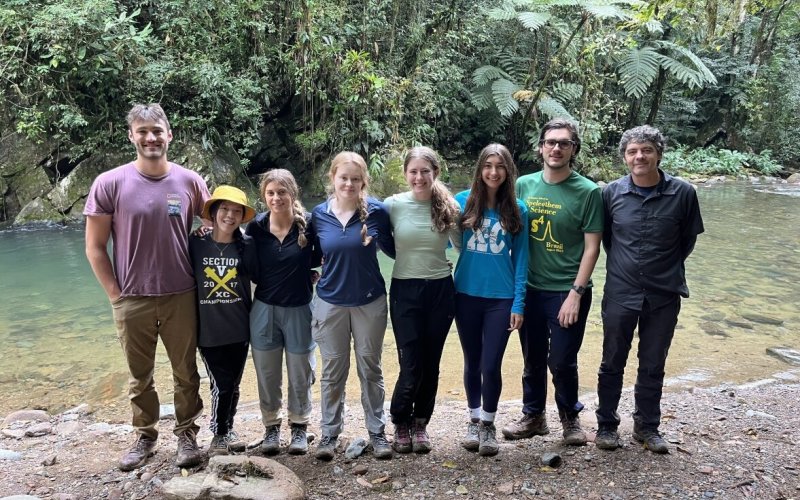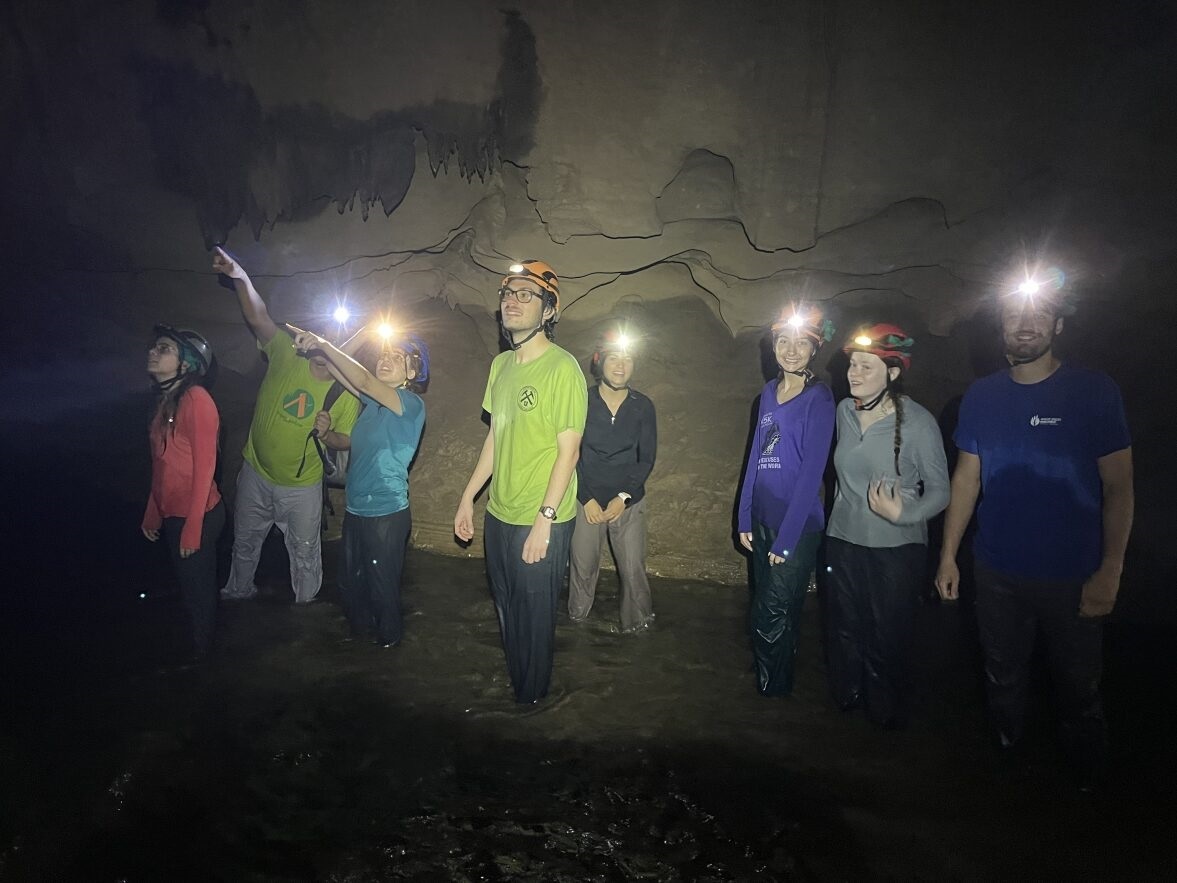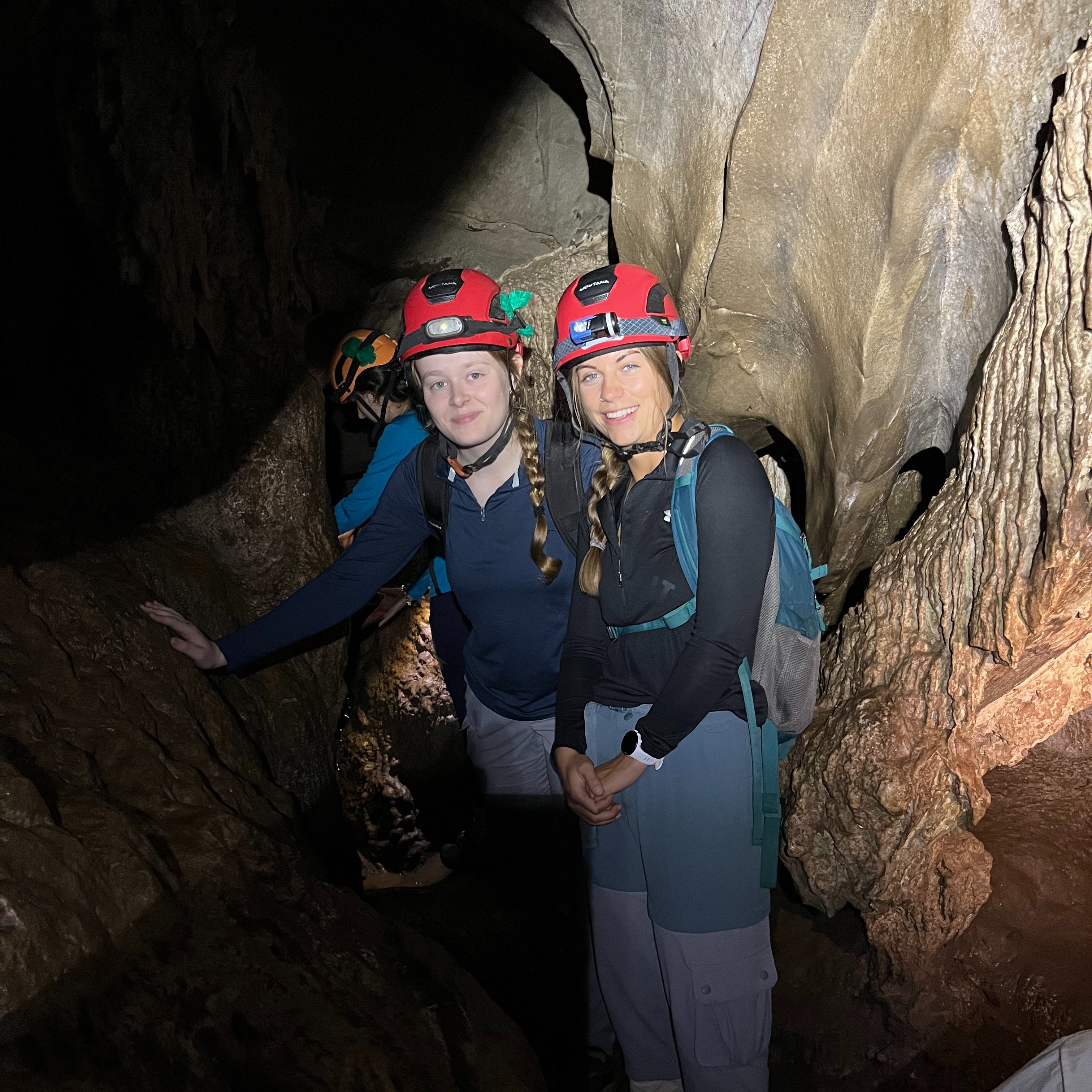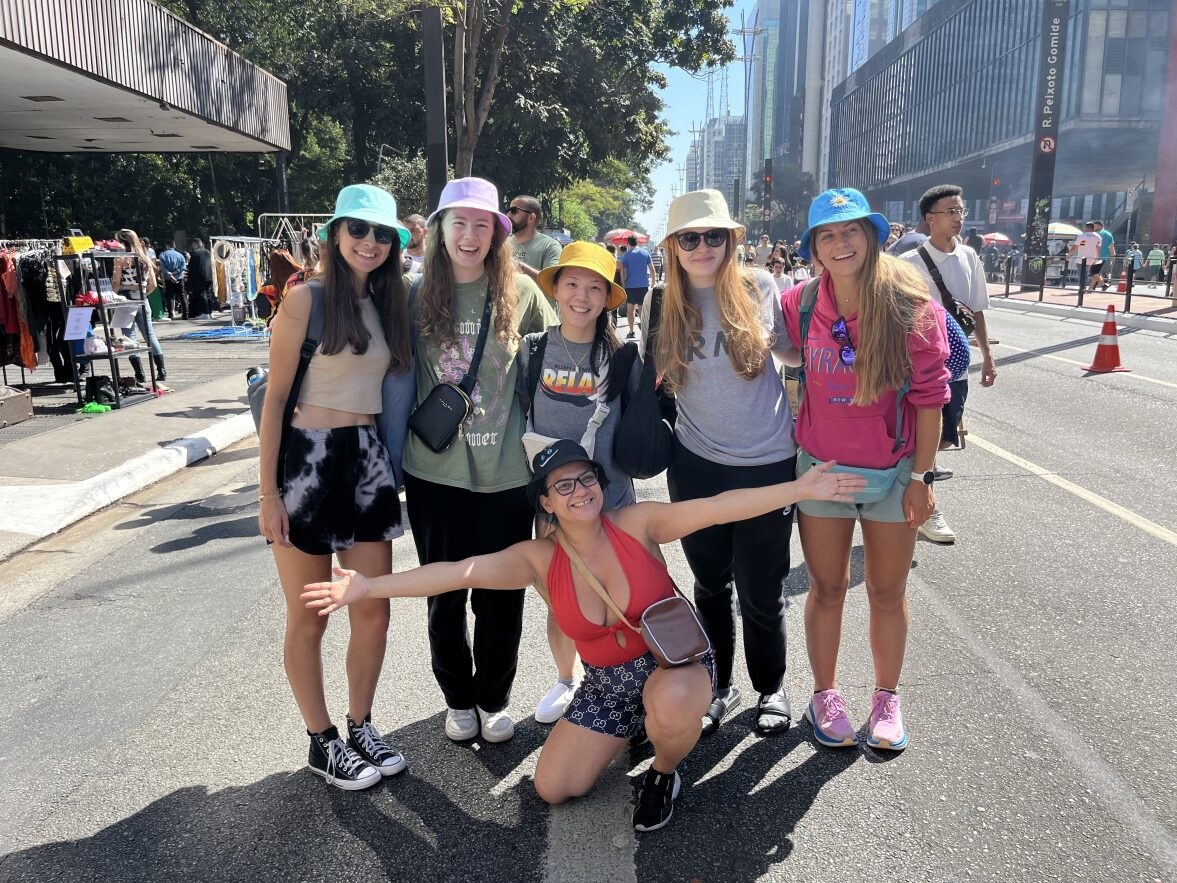UAlbany Summer: PIRE Students Explore Brazilian Caves to Study Climate Change History

By J.T. Stone
ALBANY, N.Y. (Sept. 12, 2023) — Seven University at Albany students in the Department of Atmospheric and Environmental Sciences (DAES) spent the end of their summer exploring the caves of Brazil to help scientists study global climate change over the last millennium.
The nine-day trip was part of UAlbany’s ongoing Partnership in International Research and Education (PIRE) CREATE project, led by DAES Professor Mathias Vuille.
Students had the opportunity to attend lectures about speleothem research at the University of São Paulo in Brazil and then apply their learning to real-world cave expeditions. They explored six caves in PETAR State Park in the Atlantic Rainforest in the country's southeastern region.
Speleothems are mineral formations found in caves that scientists use to study climate variations over specific time periods. Stalactites (which grow from cave ceilings) and stalagmites (which grow from cave floors) are the most common types of speleothems. They form when rainwater mixes with carbon dioxide to produce carbonic acid, an acid that dissolves limestone into calcite. When the water enters the cave, the carbon dioxide degasses and causes the calcite-saturated water to solidify. This process slowly forms icicle-shaped speleothems over hundreds of thousands of years.
Once samples are collected, scientists can analyze the oxygen isotopes found in a speleothem’s calcite powder, which can provide insight into what the climate outside the cave walls was like at that time.
Navigating The Caves
Everyone had to wear helmets and headlamps while exploring the caves, with some of the expeditions lasting for several hours. While students themselves did not collect speleothem samples due to their sensitive nature, they participated in informational tours that covered how to find optimal samples and stay safe in cave environments.

“The goal for undergraduate students is to get them excited about climate science,” Vuille said. “They want to learn about the environment and do something about improving it for the future. This is a unique opportunity for hands-on research outside of the classroom.”
Jakob Greenwood, a DAES senior who went on the trip, said the highlight for him was swimming in the caves. “Being in the water while exploring the caves was the greatest experience ever. It felt amazing having the water up to my neck and learning so much about cave environments with brand new people.”
Anna Bishop, a DAES junior who attended the trip, said at one point everyone was asked to turn off their headlamps to absorb and appreciate the cave setting fully. “Being completely silent in these dark caves felt really tranquil, peaceful and comforting.”
Reconstructing Climate Change
In 2017, Vuille received a $5 million grant from the National Science Foundation (NSF) to study how and why the climate has changed in North and South America over the past thousand years.

PIRE CREATE is a collaboration between Vuille and six institutions and 18 investigators from the United States, Brazil and Argentina. Over the program’s lifespan, they have merged data from the two largest tree-ring and cave sediment archives in the Southern Hemisphere to produce reconstructions of historical extreme weather events, analyze societal responses and make future climate projections. The hope is that this research can influence global climate policies by better understanding the driving forces behind climate change.
The first UAlbany PIRE trip took place in 2019 but the program was put on hold until this year due to the COVID-19 pandemic. Vuille said he hopes to take students on another PIRE research trip to Argentina next summer to study tree-ring research before the program’s grant expires.
“We’re excited to help train the next generation of scientists that can work across borders by collaborating internationally and interdisciplinarily,” he said.
Cultural Immersion
Along with expanding their scientific expertise in climate science and cave research, students also gained a culturally enriching experience by learning to live in a new country.

“Most of these students had never been abroad before and had to get passports. For them it was also a culturally enriching experience because it allowed them to see what the world looks like outside of the United States,” Vuille said. “It’s important to teach students that it’s OK to step outside your comfort zone.”
Alison Sawyer, another DAES junior, said the trip further inspired her to pursue a career in paleoclimate research. “There’s so many avenues I can take as a paleoclimatologist. Being immersed in a completely different environment widened my perspective of what is available to me.”
Greenwood added that even when the trip didn’t go as planned, it only made the experience more memorable. “I found a tree frog in my shower and underneath my pillow, but honestly it made the trip better because it’s a great story to tell people.”




